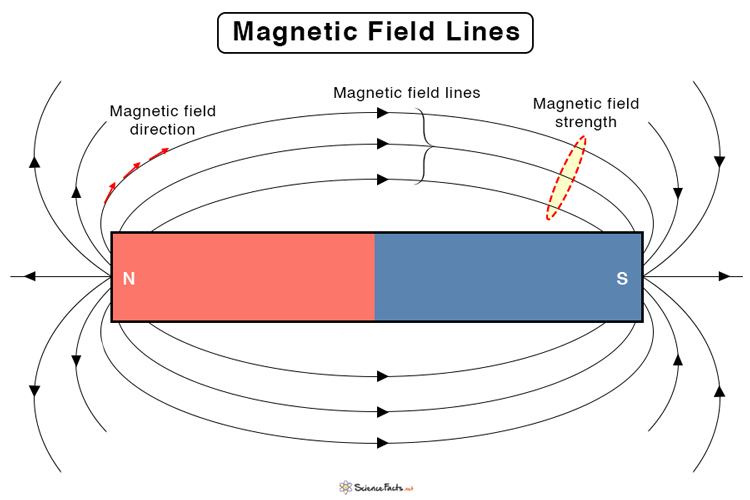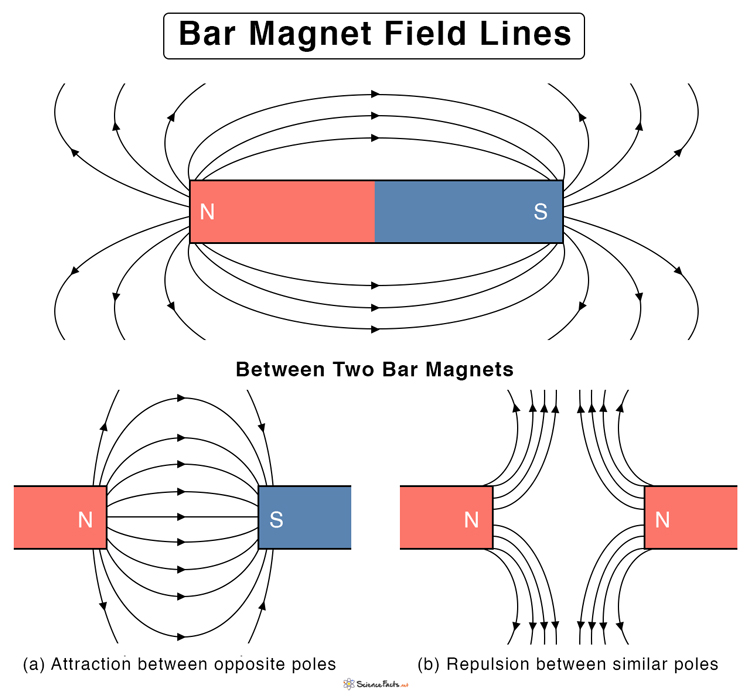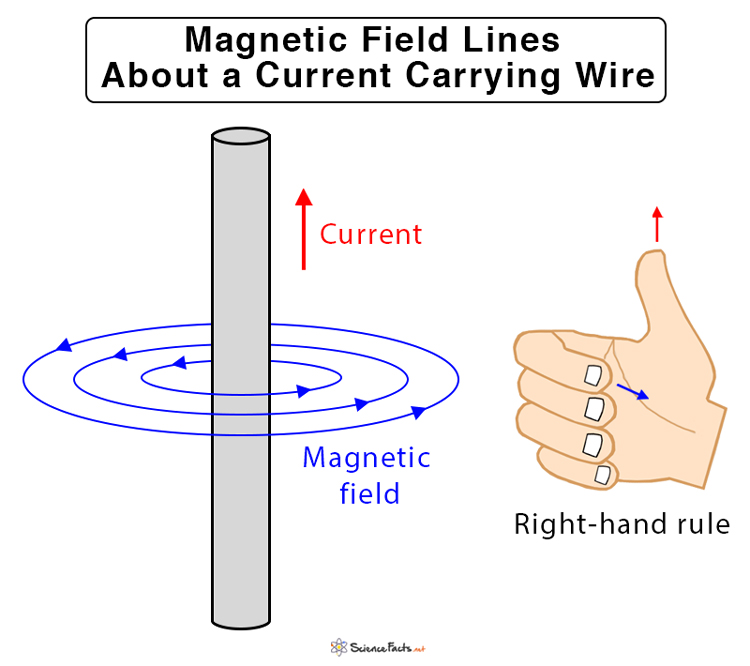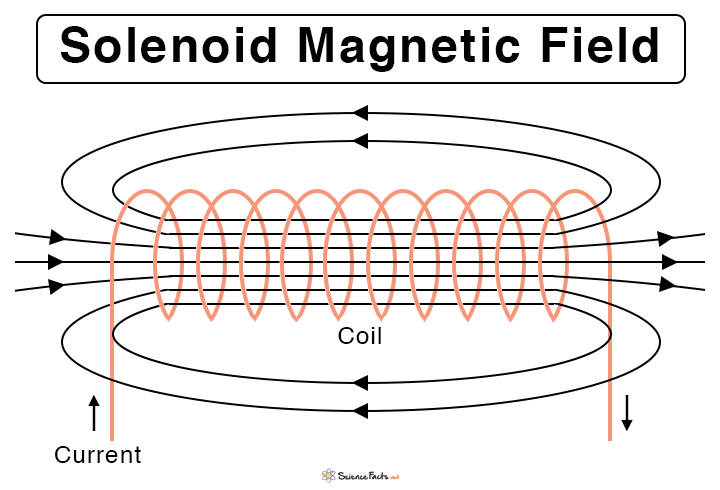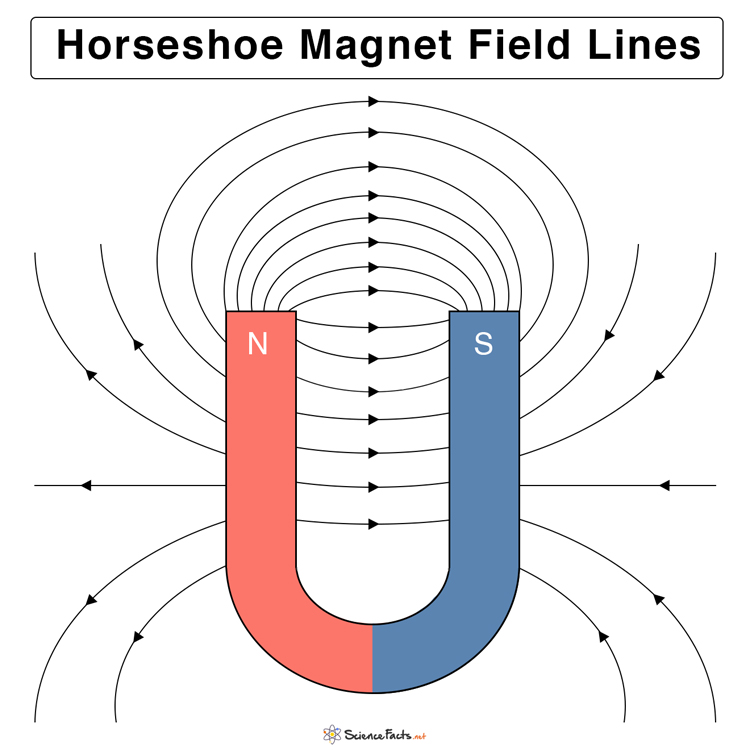Properties of Magnetic Field Lines
Examples of Magnetic Field Lines
Closed and continuous curveDensity determines the magnetic field strength – crowding of field lines indicates a strong magnetic fieldDensity decreases with increasing distance from the objectThe magnetic field and magnetic force are tangential to the linesThe lines never cross each other. If they do, the tangent at the point of intersection will show different directions, which is not possible
Properties of Magnetic Field Lines of a Bar Magnet Apart from the properties discussed in the previous section, the magnetic field lines of a bar magnet have the following additional properties.
Flow from north to south pole outside the magnet and south to north pole inside the magnetParallel and uniform inside the magnet and diverges and non-uniform outsideCloser together at the polesIncreases the magnetic field strength at the poles
Two Magnets Next to Each Other When two bar magnets are placed next to each other, their magnetic field lines are distorted due to the forces of attraction and repulsion between magnets. The rule is that like poles repel and opposite poles attract. When the north pole of one bar magnet faces the south pole of another, the magnetic field lines will join together (refer to (a) in the above image). The lines will come out from the north pole and terminate in the south pole. The lines will become denser in the region between the two poles. When two north poles or two south poles are close to one another, the magnetic field lines will bend away from each other due to repulsion (refer to (b) in the image).
2. Current-carrying Wire
Ampere’s law has shown that current flowing through a wire produces a magnetic field. The magnetic field lines around any current-carrying wire are concentric circles with the center lying on the wire. The direction of magnetic field lines can be determined using the right-hand rule. Suppose the thumb points in the current direction. The fingers curling around the wire give the direction of the magnetic field. The strength of the magnetic field is inversely proportional to the distance from the wire.
3. Solenoid
A solenoid is a coil of many circular turns of insulated copper wire wrapped tightly like a helix, often around a metallic core. The shape of a solenoid is typically cylindrical with a straight axis. When current passes through the wires, a magnetic field is produced; thus, the solenoid behaves like an electromagnet. The magnetic field lines are similar to that of a bar magnet. Inside the solenoid, the field lines are parallel and the magnetic field is uniform. On the other hand, the magnetic field outside is zero.
4. Horseshoe Magnet
A horseshoe magnet takes the shape of a horseshoe or a U shape. It can be made into either a permanent magnet or an electromagnet. The primary advantage of a horseshoe magnet over other types of magnets is that the magnetic poles are very close to one another resulting in a much stronger magnetic field.
